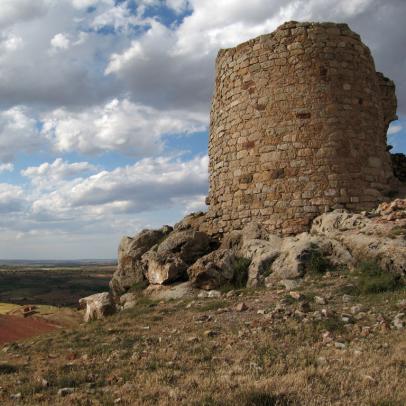Castle of Monforte de Moyuela

It is situated on a hill, overlooking the town. Access is easy Monforte de Moyuela
At El Cid’s time, there was an Islamic castle or fortress in Monforte. The castle that can still be seen today was conquered in 1153 by Ramón Berenguer IV, the Count of Barcelona and Prince of the kingdom of Aragón. As regards this nobleman’s connection with the story of El Cid, he was the son of Ramón Berenguer III, who married one of El Cid’s daughters: María.
It is believed that El Cantar de Mío Cid includes references to Monforte: there are scholars who argue that this was one of the areas controlled by the Muslims, who suspected El Cid’s presence at Tévar on account of the foraging raids that he had launched against them at Alcañiz.
The castle was raised on an oval base, but the only remaining portions of the building are two turrets and several remains of the walls, which still stand. In spite of the fact that the castle is in poor condition, the climb from the town is well worth the effort.
Recruiting of men for the war: the castle of Monreal del Campo.
After five months in exile, El Cid pitched and fortified on the hill of San Esteban (situated in El Poyo del Cid), defiantly dominating the area—“overlooking Monreal” . Three years later and after conquering Sagunto, he came back to this region to recruit men from Aragón, Navarra and Castile. They would eventually help him to conquer Valencia. This is clearly an anachronism, for it is very likely that at the time of El Cid Monreal del Campo did not exist.
Monreal (Mont Real) was originally a fortress. It was constructed in the 12th century following an order of construction issued by Alfonso the Battler, who wished to control this dangerous region. Different armies and organized religious groups passed through this area at the time. The objective was to ensure safe passage for traders and settlers and to open a commercial route towards Tierras de Molina.
The only remaining portion of the castle is the fortress perimeter area, which stands no more than a couple centimeters above the ground. The other parts were destroyed during the Carlist Wars. The current Cimera tower, which has a square base and is made of stone masonry, was built on the remains of the castle. The tower has a coat of arms.
Rev. PAB 27.12.18


